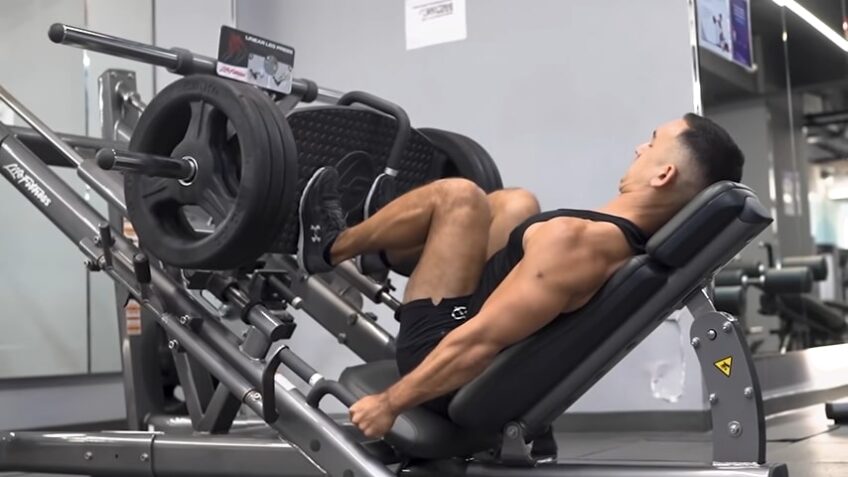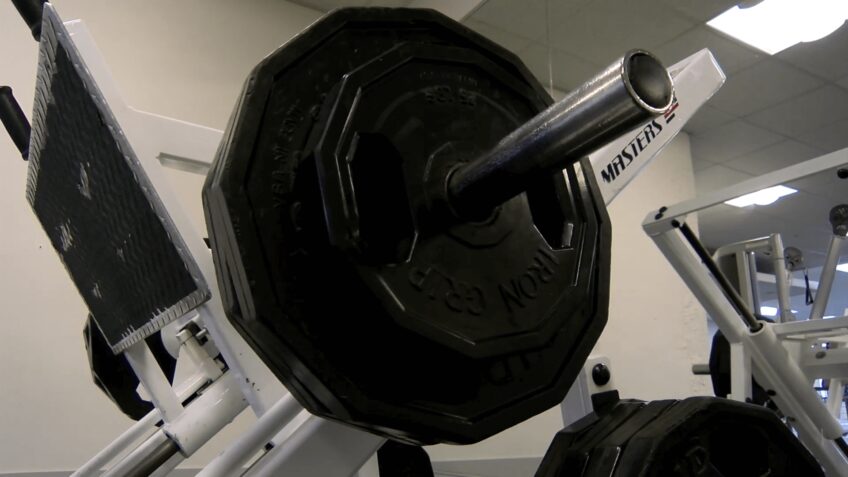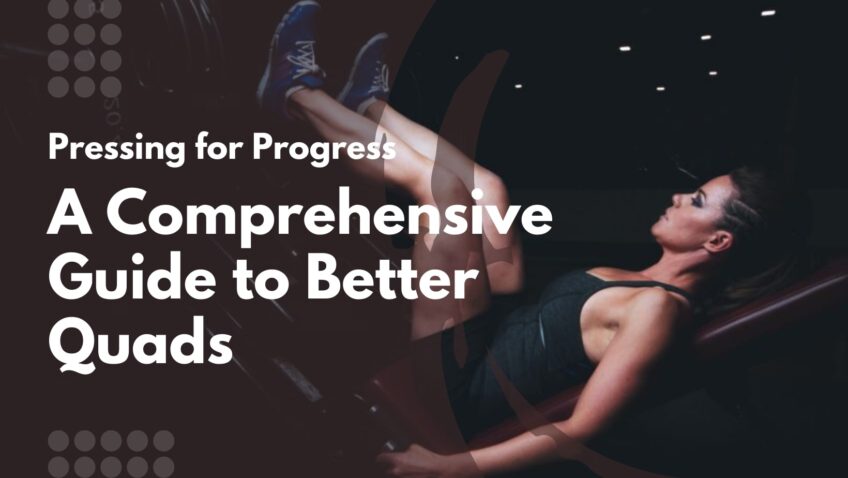When it comes to building leg strength, the leg press is a staple exercise that can be found in almost every gym. Despite its ubiquity, many gym-goers wonder, “How much should I leg press?” The answer, as with many things in life, is not so simple. It depends on your goals, experience, and individual body. In this comprehensive blog post, we will delve into the factors that influence your ideal leg press weight, discuss how to progress over time, and provide tips for avoiding injury.
Understanding the Leg Press

The leg press is a compound exercise that primarily targets the quadriceps, but also engages the hamstrings, glutes, and calves. It is performed on a leg press machine, where the user sits in a reclined position and pushes a weighted platform away from the body using the legs. The leg press is beneficial for building strength, and muscle mass, and improving athletic performance.
Factors Influencing Your Ideal Leg Press Weight
Goals: Your weight will be dictated by your specific fitness goals. For instance, if you’re focused on building muscle mass and strength, you should aim for heavier weights with fewer repetitions (4-6 reps). If you’re looking to improve muscular endurance or tone your legs, you should opt for lighter weights with higher repetitions (12-15 reps).
Experience: Your training experience and level of strength will also affect how much you should leg press. Beginners should start with a lighter weight to develop proper form and technique. As you gain experience and strength, you can gradually increase your weight.
Body Composition: Your body weight, muscle mass, and overall body composition will influence your capabilities. Generally speaking, those with a higher muscle mass or lower body fat percentage will be able to leg press more.
Age and Gender: Age and gender can also impact leg press performance. As we age, our strength and muscle mass tends to decrease, which may affect how much we can leg press. Additionally, men tend to have a greater muscle mass than women, which can result in higher leg press weights.
The Impact of Age and Gender on Leg Pressing Performance
Age and gender are important factors that can impact performance. As we age, our strength and muscle mass tends to decrease, which may affect how much weight we can leg press. Therefore, older individuals may have a lower leg press weight compared to younger individuals. Additionally, women tend to have less muscle mass compared to men, which may affect their weight. However, it’s essential to note that these are generalizations, and individual factors such as training experience, body composition, and overall health can also impact leg press performance.
To optimize performance regardless of age or gender, it’s crucial to establish proper form and technique. This includes maintaining a flat back against the backrest, ensuring your feet are flat on the platform, and keeping your knees in line with your toes.
Additionally, gradually increasing the weight over time and following a consistent training program can help individuals of all ages and genders improve their strength. Incorporating exercises that target supporting muscle groups such as the hamstrings, glutes, and calves can also improve overall leg press performance. By prioritizing proper form, gradual progression, and a well-rounded training program, individuals can optimize their leg press performance regardless of age or gender.
How to Determine Your Starting Weight

Before you jump onto the machine, it’s essential to establish your starting weight. Follow these steps to find a suitable weight for your fitness level and goals:
- Warm-up: Perform a dynamic warm-up to increase blood flow to your muscles and prepare your body for exercise. Include leg swings, high knees, and lunges.
- Begin with an empty machine: Start with just the weight of the leg press sled (usually around 45 lbs or 20 kg) to assess your form and technique. Perform 10-15 reps to familiarize yourself with the movement.
- Gradual increase: Add weight in small increments (10-20 lbs or 5-10 kg), performing a set of 10-12 reps at each weight. Once you reach a weight where you can perform 10-12 reps with good form but find it challenging, this will be your starting weight.
Progressing Your Leg Press Weight
To ensure continuous progress, you should regularly increase the weight on the leg press. Here are a few strategies for doing so:
- Progressive Overload: Gradually increase the weight by 5-10% once you can perform your desired number of reps with good form. This will challenge your muscles and stimulate growth.
- Rep Ranges: Vary your rep ranges to promote muscle growth and prevent plateaus. For example, you can alternate between heavy sets (4-6 reps) and lighter sets (12-15 reps) throughout your workout program
- Time Under Tension: Increase the time under tension by slowing down the eccentric (lowering) portion of the movement. This will increase the time your muscles are under load and promote muscle growth.
- Intensity Techniques: Introduce intensity techniques such as drop sets, supersets, or partial reps to shock your muscles and break through plateaus.
The Differences Between Leg Pressing and Squatting
While both leg pressing and squatting are popular exercises for building leg strength, there are significant differences between the two movements. It involves pushing a weighted platform away from the body using the legs while sitting in a reclined position, whereas squatting involves standing with the weight on the shoulders and bending the knees to lower the body.
One key difference is that it is a closed kinetic chain exercise, meaning that the feet remain stationary on the platform. In contrast, squatting is an open kinetic chain exercise, where the feet are free to move. This can impact muscle activation, with leg pressing placing a greater emphasis on the quadriceps and squatting targeting the glutes and hamstrings.
Squatting requires more core stabilization and balance, making it a more functional exercise for activities of daily living. Ultimately, both exercises can be effective for building leg strength, and incorporating both into your workout routine can provide a well-rounded leg workout.
The Role of Muscle Groups in Leg Pressing
The leg press primarily targets the quadriceps, which are the muscles located on the front of the thigh. The quadriceps are responsible for knee extension, which is the primary movement involved in leg pressing. However, other muscle groups also play a role in leg pressing. The hamstrings, located on the back of the thigh, work as stabilizers during the exercise, preventing the pelvis from tilting forward. The glutes, located in the buttocks, also play a stabilizing role, helping to keep the knees in line with the toes. The calf muscles, located on the back of the lower leg, also play a role in leg pressing, helping to stabilize the ankle joint. The lower back muscles work to stabilize the spine during the exercise.
Proper form and technique are essential to ensure that all muscle groups are engaged and working synergistically to perform the movement correctly. Neglecting certain muscle groups or using the improper form can increase the risk of injury and limit the effectiveness of the exercise. By prioritizing proper form, engaging all muscle groups, and gradually increasing the weight over time, individuals can optimize their leg press performance and achieve their strength and muscle-building goals.
Tips for Avoiding Injury
As with any exercise, it’s crucial to prioritize safety and avoid injury when performing the leg press. Here are some tips to keep in mind:
- Proper Form: Ensure that your back is flat against the backrest, your feet are flat on the platform, and your knees are in line with your toes. Avoid locking out your knees or rounding your lower back, which can place undue stress on the joints.
- Gradual Progression: Avoid increasing the weight too quickly, which can increase the risk of injury. Gradual progression with proper form is key to preventing injury.
- Proper Warm-Up: Perform a dynamic warm-up to increase blood flow to your muscles and prepare your body for exercise.
- Listen to Your Body: If you experience any pain or discomfort while performing the leg press, stop immediately and consult with a healthcare professional.
FAQs
How often should I include leg pressing in my workout routine?
The frequency of your workout routine will depend on your fitness goals and overall training program. For most individuals, 1-2 times per week is sufficient.
Can leg pressing help to improve athletic performance?
Yes, it can improve athletic performance by increasing strength, power, and explosiveness.
How does leg pressing compare to squatting?
It is a closed kinetic chain exercise that primarily targets the quadriceps, while squatting is an open kinetic chain exercise that targets the glutes and hamstrings. Squatting also requires more core stabilization and balance.
What should I do if I am unable to leg press due to physical limitations?
If you are unable to do it due to physical limitations, consult with a healthcare professional and consider alternative exercises such as bodyweight squats or lunges.
Is leg pressing suitable for beginners?
Yes, it can be suitable for beginners. It’s essential to start with a lighter weight to develop proper form and technique.
How long does it take to see results from leg pressing?
The time it takes to see results from leg pressing will depend on various factors such as training experience, frequency, intensity, and nutrition. Consistency and gradual progression are key to achieving results.
Conclusion
In conclusion, the answer to “How much should I leg press?” is not straightforward and will depend on various factors such as your goals, experience, body composition, age, and gender. It’s essential to establish a starting weight, progressively increase the weight over time, and prioritize safety to avoid injury. With proper form, gradual progression, and consistency, the leg press can be an effective exercise for building leg strength and muscle mass.

